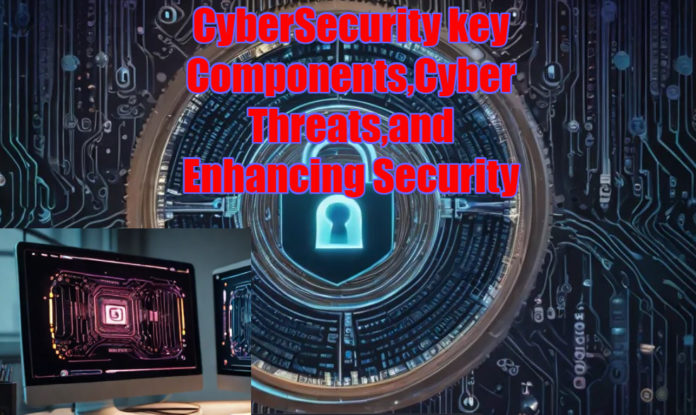In today’s increasingly digital world, cybersecurity remains a key concern for both individuals and organizations. Understanding the basics of cybersecurity is critical for keeping your personal and professional information safe from emerging cyber threats that continue to upgrade their level of sophistication.
Cybersecurity can be described as the collective methods, technologies, and processes to help protect the confidentiality, integrity, and availability of computer systems, networks, and data against cyberattacks or unauthorized access. This article delves into the major considerations of cybersecurity: common threats, effective protection strategies, and best practices on how to stay safe online.
What is Cybersecurity?
Cybersecurity is the practice of protecting computers, servers, mobile devices, and networks from digital attacks, theft, and other damage. This would involve various technologies, processes, and practices designed to protect sensitive data and ensure the integrity and availability of systems.
Key Components of Cybersecurity
Network Security
Network security actually means protection for your network infrastructure from intrusion and attack. Firewalls, intrusion detection systems, and virtual private networks are the most common tools towards this effect. Periodic implementation of security updates on the network, monitoring of network traffic, and protection of the network devices.
Endpoint Security
Endpoint security deals with the security of individual endpoints—computers, smartphones, and tablets. Antivirus software, anti-malware programs and encryption are some of the major components. Keep all devices updated with the latest security patches and use strong passwords.
Also read: Discover the Newest Waterproof and Fast Smartphones that Come on Sale
Application Security
Application security addresses the security of software applications against different kinds of threats and vulnerabilities. Secure coding practices, periodic scanning for vulnerabilities, and application firewalls remain a must. Conduct periodic security reviews of an application and upgrade the software when vulnerabilities are found.
Data Security
Data security involves protecting data from unauthorized access, modification, or destruction. Encryption, data masking, and backup of data securely. Limit the access to data, back up important data, and do it regularly.
Cloud Security
Cloud security refers to the security of data and applications situated in cloud environments. The different tools for cloud security are encryption, identity management, and access control. Choose a good, reputed cloud provider and ensure that your data is encrypted and access is restricted.
Common Cyber Threats
Phishing Attacks
It is a way of fooling people into giving out their most intimate information by simply presenting themselves as rightful owners. Unsolicited e-mails should be avoided; the sender should be verified before clicking attachments or links that may pop up and request information.
Ransomware
Ransomware is a program designed to encrypt the user’s data for the attacker’s safe return with the demand for a ransom. Back up data regularly and update security software continuously.
Malware
Malware types are many—those types of software created with the intent to damage systems or give access to unauthorized users. Proper antivirus and avoid downloads from sources considered less trusted.
Denial-of-Service (DoS) Attack
Types of attacks overwhelm a network or site with traffic, and in that way, they become unreachable to others. Use security on the network to prevent its occurrence; it could also be necessary to deploy services that can handle such an attack.
Man-in-the-Middle (MitM) Attack
The MitM attack involves active interception and possible alteration of communication between two parties. Encryption protocols and lines of communication are with a career.
Best Practices to Enhance Cyber Security
Cyber Security Awareness and Training
Tip: Stay informed about recent cyber threats and the best practices to counter these.
Resource: Cybersecurity and Infrastructure Security Agency-CISA
Use Effective Password Policy
Tip: Passwords ought to be complex and changed on a regular basis.
Resource: Guidelines for NIST Password
Keep Software and Systems Up-To-Date
Tip: Ensure all software is up-to-date, including security patches.
Resource: US-CERT Software Updates
Backup Critical Data
Tip: Regularly back up data to secure locations.
Resource: Data Backup Best Practices
Implement Multi-Factor Authentication (MFA)
Tip: Ensure access to devices and platforms that require multiple methods of verification to access devices and platforms.
Resource: Google MFA Setup Additional Resources
Cybersecurity is very important in providing the necessary defense for your digital environment from different forms of threats. By knowing key components that range from network security and endpoint protection to data security, you can reduce your risk quite substantially from cyberattacks. Be keen on information and proactive to ensure that your digital assets remain protected.
FAQs
1. What is the difference between cybersecurity and information security?
While security in cybersecurity focuses on the protection of digital assets from online threats, information security involves broader measures for protecting all forms of information, both physical and digital.
2. How often should I update my passwords?
It is recommended that one update his/her passwords every 3 to 6 months or immediately if suspected of a security breach.
3. What should I do if I suspect a cybersecurity incident?
Inform your IT department or cybersecurity team about this, and follow their instructions on how to contain the situation or mitigate it.

